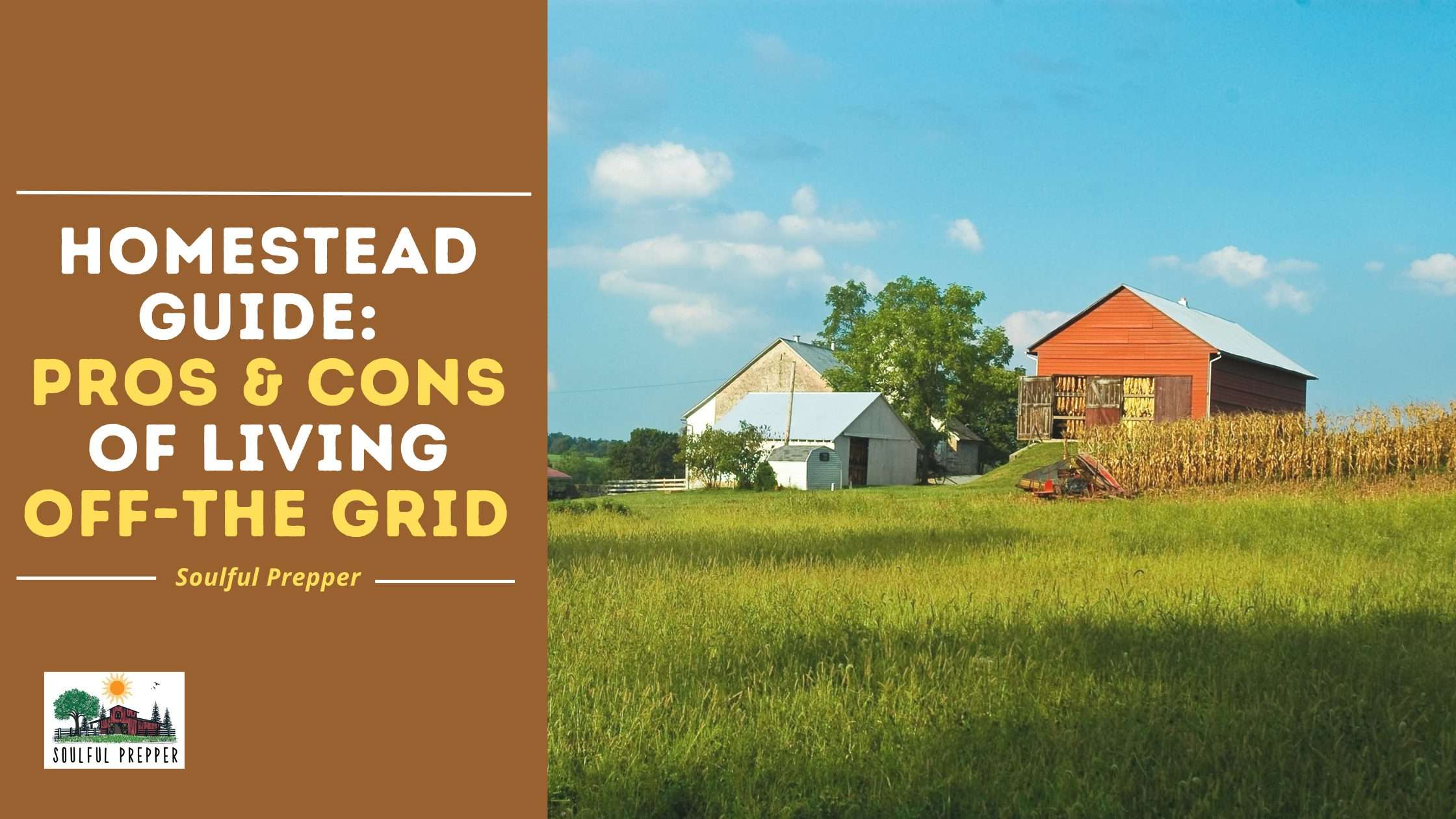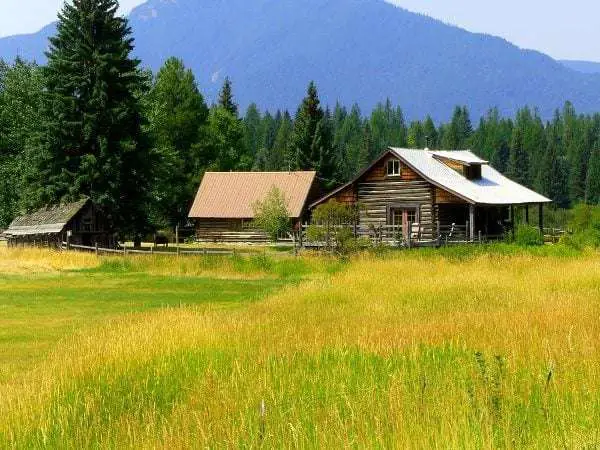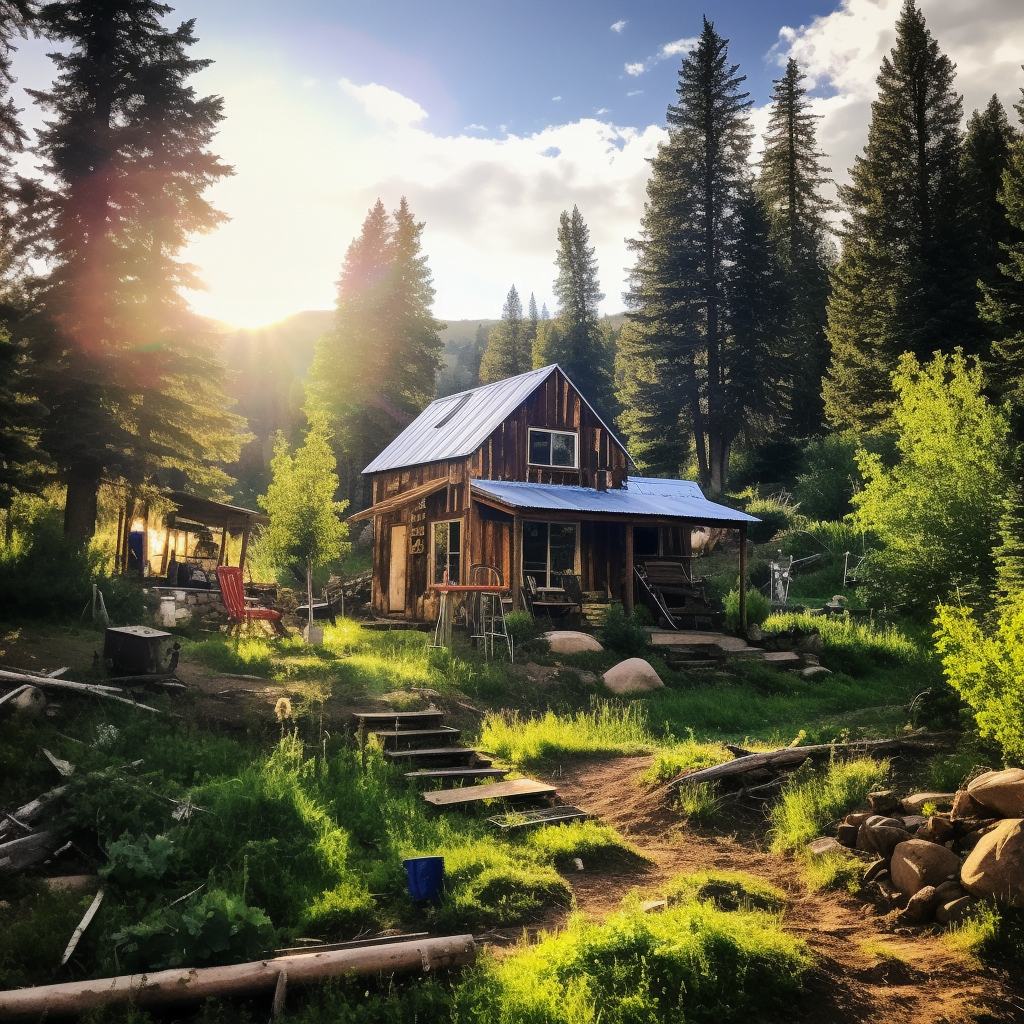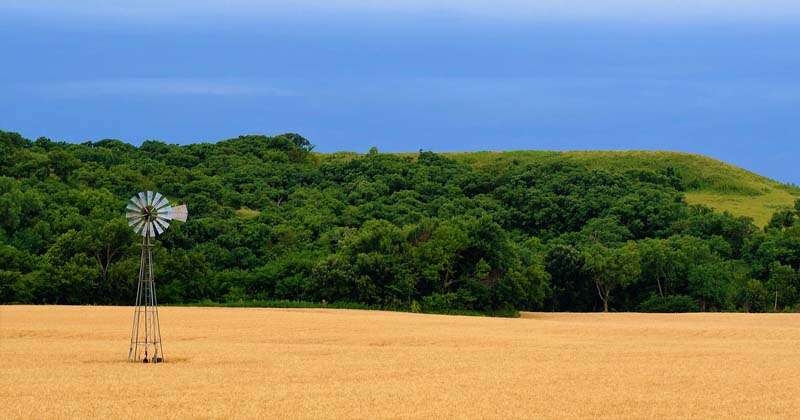Starting an off-grid homestead may sound appealing with its promises of self-reliance and a closer connection to nature, but don’t let its allure fool you – it’s a daunting endeavor. Unlike starting a regular homestead, an off-grid homestead requires much more effort and planning. From finding suitable land for growing crops and harvesting rainwater to setting up alternative power sources, such as solar panels or wind turbines, there are numerous challenges and considerations to navigate. However, if you’re willing to put in the hard work and invest in necessary systems like composting toilets and rainwater harvesting, the rewards of living off-grid can be truly gratifying. So, before embarking on this journey, make sure to assess your needs, set clear goals, and acquire the skills needed to thrive in an off-grid environment.
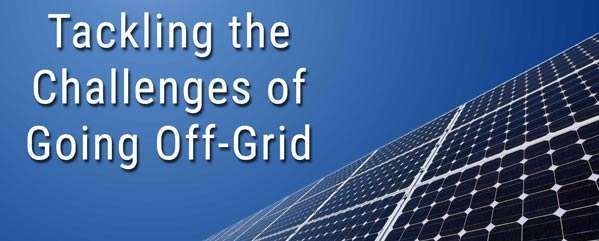
Finding Suitable Land
When starting an off-grid homestead, one of the first considerations is finding suitable land. There are several factors to take into account when selecting a piece of land for your homestead.
Considerations for land selection You need to consider various factors such as the size of the plot, the topography of the land, and the availability of natural resources. Ideally, you want a plot of land that is large enough to accommodate all your needs, including space for growing crops, raising animals, and constructing structures. Additionally, the topography of the land should be suitable for building and farming.
Locating rural or remote areas Many off-grid homesteads are situated in rural or remote areas with limited access to the power grid. This is because these areas provide the opportunity for a more self-reliant lifestyle and are often more affordable. However, it’s important to consider the accessibility of the land. You’ll need to ensure there are suitable roads or ways to transport materials to and from your homestead.
Access to water sources Water is a top priority when setting up an off-grid homestead. You’ll need a reliable and sustainable source of water. This can be achieved through rainwater harvesting systems or by locating your homestead near a natural water source such as a stream or river. It’s important to research and understand the local regulations and laws regarding water rights and usage before selecting a piece of land.
Choosing land with suitable soil The quality of the soil is crucial for successful crop cultivation. Look for land that has rich, fertile soil or soil that can be easily amended and improved. Conduct soil tests to determine the nutrient composition and pH levels. This will help you determine if the soil is suitable for growing the crops you have in mind. Additionally, consider the availability of sunlight, as most crops require a certain amount of sunlight to thrive.
Setting Up the Homestead
Once you have found a suitable piece of land, it’s time to set up your homestead. This involves clearing the land, preparing the site, building structures, and installing necessary systems.
Clearing land and preparing the site Clearing the land involves removing any vegetation, rocks, or debris that may hinder construction or farming activities. This can be done manually or with the help of heavy machinery, depending on the size of the land. After clearing, you’ll need to level the land and prepare it for construction and farming. This may involve activities such as grading, trenching, and packing the soil.
Building suitable structures When building structures for your homestead, it’s important to consider energy efficiency, durability, and functionality. Choose materials that are suitable for the local climate and can withstand the harsh conditions of off-grid living. This may include using sustainable building materials such as wood, straw bales, or recycled materials. Additionally, design your structures in a way that maximizes natural light and ventilation, reducing the need for artificial lighting and cooling.
Installing rainwater harvesting systems Water conservation is crucial in off-grid homesteading. Installing rainwater harvesting systems allows you to collect and store rainwater for various uses such as irrigation, animal watering, and household needs. There are various methods of rainwater harvesting, including rain barrels, cisterns, and underground storage tanks. Consider the size of your homestead and water needs when designing and installing a rainwater harvesting system.
Setting up composting toilets Waste disposal is an important aspect of off-grid living. Composting toilets offer a sustainable solution for waste management. They convert human waste into compost that can be used as fertilizer for crops. Composting toilets are eco-friendly, reduce water usage, and minimize the need for septic systems. It’s important to research and follow local regulations and guidelines when installing and using composting toilets.
Power Generation
Understanding your power needs is crucial when setting up an off-grid homestead. You’ll need to assess your energy requirements and explore options for generating off-grid power.
Options for generating off-grid power There are several options for generating off-grid power, including solar panels, wind turbines, and diesel or gas generators. Solar panels are a popular choice for off-grid homesteads due to their reliability, low maintenance, and environmental friendliness. Wind turbines can also be a viable option in areas with consistent wind patterns. Diesel or gas generators can serve as backup power sources during periods of low sun or wind.
Benefits and drawbacks of solar panels Solar panels are a reliable and sustainable source of off-grid power. They harness energy from the sun and convert it into electricity. Solar panels have a long lifespan, require minimal maintenance, and can significantly reduce or eliminate your reliance on the power grid. However, they have some drawbacks. Initial installation costs can be high, especially for larger systems. Additionally, solar panels are dependent on sunlight, so power generation may be limited during cloudy days or in areas with less sunlight.
Considerations for wind turbines Wind turbines are another option for off-grid power generation, especially in areas with consistent wind patterns. They harness the power of the wind and convert it into electricity. Wind turbines can be an excellent source of renewable energy, but they require careful consideration before installation. Factors such as average wind speed, available space, and local regulations need to be assessed. It’s important to select the appropriate size and type of wind turbine to match your energy needs.
Water Management
Water conservation is essential in the off-grid lifestyle. Managing water usage, harvesting rainwater, and exploring alternative water sources are important aspects of off-grid water management.
Importance of water conservation When living off-grid, water is a limited resource, and conserving it is crucial. Conserving water not only helps you make the most of your available water supply but also reduces your environmental impact. Simple measures such as fixing leaks, using low-flow fixtures, and practicing mindful water usage can go a long way in conserving water.
Harvesting rainwater Rainwater harvesting is an effective method of collecting and storing rainwater for various uses. By capturing rainwater from rooftops or other surfaces, you can reduce your reliance on other water sources. Rainwater can be used for irrigation, livestock watering, and household needs. Install gutters, downspouts, and storage tanks to collect and store rainwater properly.
Purifying and filtering water Water purification is essential to ensure the water you use is safe for drinking and other purposes. There are several methods of purifying water, including mechanical filters, ultraviolet (UV) sterilizers, and chemical treatments. It’s important to research and choose the appropriate water purification methods based on the quality of your water source and your specific needs.
Exploring alternative water sources In addition to rainwater harvesting, it’s beneficial to explore alternative water sources such as boreholes, wells, or natural springs. These sources can provide a reliable and sustainable supply of water. However, it’s important to assess the quality and quantity of these water sources before relying on them.
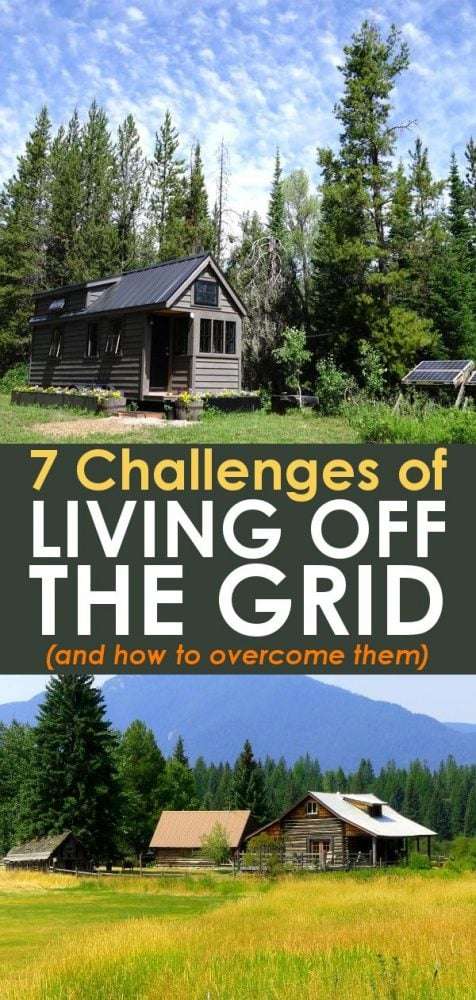
Growing Crops
Growing your own crops is an integral part of off-grid living. It provides you with fresh and nutritious food and reduces your dependence on external food sources. However, there are several challenges involved in growing your own crops.
Challenges of growing own crops Growing crops in an off-grid homestead comes with its own set of challenges. These challenges include limited access to resources, unpredictable weather conditions, pests and diseases, and the need for proper soil fertility. It’s important to be prepared to tackle these challenges by implementing sustainable farming techniques.
Improving soil fertility through composting Composting is a valuable practice that can help improve soil fertility. By composting organic waste materials such as kitchen scraps, garden trimmings, and livestock manure, you can create nutrient-rich compost that adds essential nutrients to your soil. Composting also helps improve soil structure, moisture retention, and overall plant health.
Choosing suitable crops for off-grid living When choosing crops to grow in your off-grid homestead, consider factors such as climate, soil type, and available space. Opt for crops that are well-suited to your local conditions and can thrive in your off-grid environment. Additionally, prioritize crops that are nutritious, versatile, and high-yielding.
Implementing sustainable farming techniques Implementing sustainable farming techniques is crucial for long-term success in off-grid crop cultivation. This includes practices such as crop rotation, companion planting, natural pest control, and minimizing the use of synthetic inputs. These techniques help maintain soil health, conserve resources, and promote biodiversity.
Food Storage and Preservation
Proper food storage and preservation are essential in an off-grid homestead. They allow you to store and preserve the abundance of food you grow, ensuring a steady supply throughout the year.
Methods for food storage There are various methods for food storage, each suitable for different types of food. Some common methods include canning, freezing, dehydrating, and root cellaring. Each method has its own advantages and considerations, so it’s important to choose the appropriate method based on the type of food, available resources, and personal preferences.
Canning, curing, salting, and smoking Canning is a popular method of preserving food by sealing it in airtight jars or cans. It allows food to be stored for long periods without refrigeration. Curing, salting, and smoking are methods commonly used for preserving meat and fish. These methods involve adding salt or smoking the food to extend its shelf life.
Building and using root cellars Root cellars are underground storage spaces that provide cool and moist conditions for storing fruits, vegetables, and other perishable food items. Building a root cellar can be an effective way to store food without electricity. Proper ventilation and humidity control are essential for maintaining the quality and freshness of the stored food.
Importance of rotating food supplies Rotating food supplies is important to ensure that older food is used first, reducing waste and ensuring the consumption of fresh and safe food. Implementing a system for rotating food supplies can help you keep track of expiration dates and maintain an organized inventory.
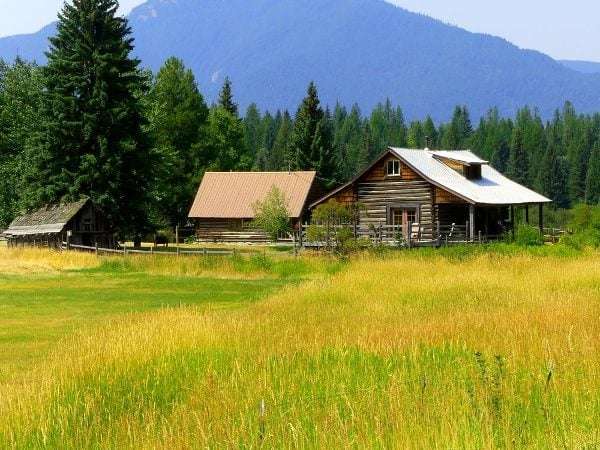
Self-Sufficiency and Skills
Self-sufficiency is at the core of off-grid living. Acquiring essential skills and knowledge is crucial to successfully maintain and thrive in an off-grid homestead.
Assessing needs and setting goals Before starting an off-grid homestead, it’s important to assess your needs and set clear goals. Identify the skills and resources you’ll need to achieve self-sufficiency. This will help you focus your efforts and prioritize your learning.
Developing skills in renewable energy Renewable energy is a key component of off-grid living. Developing skills in renewable energy systems, such as solar panel installation and maintenance, can help you become more self-reliant and reduce your environmental impact. Explore online tutorials, workshops, and local resources to learn about renewable energy.
Learning water conservation techniques Water conservation is crucial in off-grid homesteading. Learning techniques such as rainwater harvesting, greywater recycling, and water-efficient gardening can help you maximize the use of available water and minimize wastage. Look for resources, books, and courses that provide guidance on water conservation techniques.
Gaining knowledge in gardening and animal husbandry Gardening and animal husbandry are essential skills for off-grid living. Learning about sustainable gardening practices, crop rotation, composting, and animal care will enable you to grow your own food and raise livestock efficiently. Seek out local experts, agricultural extension offices, and online resources for guidance in these areas.
Maintenance and Upkeep
Maintaining an off-grid homestead requires regular tasks to ensure proper functioning of systems and infrastructure.
Regular tasks for maintaining the homestead Regular maintenance tasks include tasks such as checking solar panels for debris, cleaning gutters, inspecting water storage tanks, monitoring energy usage, testing backup systems, and assessing the health of crops and animals. These tasks should be performed regularly to prevent issues and ensure everything is functioning as intended.
Repairing and maintaining infrastructure Over time, infrastructure elements such as buildings, fences, and irrigation systems may require repairs or maintenance. Regularly inspect these elements for signs of damage or wear and address repairs as needed. Additionally, maintaining good upkeep of infrastructure will help in prolonging their lifespan.
Replacing and upgrading off-grid systems Off-grid systems such as solar panels, wind turbines, and batteries will require occasional replacement or upgrades. Stay informed about new technologies and advancements in off-grid systems to ensure you are utilizing the most efficient and reliable options available. Budgeting for system replacements and upgrades will also help in managing the costs.
Budgeting for maintenance costs Maintenance costs are an inevitable part of off-grid living. Set aside a budget specifically for ongoing maintenance and repairs. This will help you address any issues promptly and minimize the impact of unexpected costs. Regularly reviewing and updating your budget will ensure you are adequately prepared for maintenance expenses.
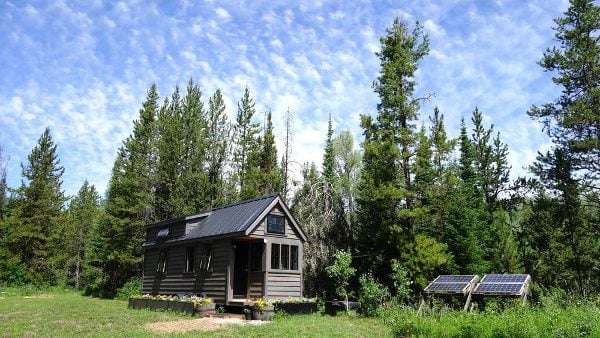
Experiencing Challenges
Living off-grid comes with its fair share of challenges. It’s important to be prepared and have strategies in place to overcome these challenges.
Overcoming isolation and limited access Living in a rural or remote area can result in isolation and limited access to services and amenities. Develop strategies to stay connected with others, whether it’s through online communities, local homesteading groups, or maintaining strong relationships with neighboring homesteaders. Additionally, plan and stock up on essential supplies to mitigate the challenges of limited access.
Dealing with extreme weather conditions Off-grid homesteaders are more exposed to extreme weather conditions, such as storms, floods, or heatwaves. Prepare your homestead for these conditions by implementing appropriate infrastructure, such as reinforced buildings, storm shutters, and emergency supplies. Stay informed about weather patterns and have backup plans in place for any potential emergencies.
Managing pests and wildlife on the homestead Pests and wildlife can pose challenges to off-grid homesteaders. Implement pest control strategies that align with your sustainable and organic practices. This may include techniques such as companion planting, natural deterrents, and physical barriers. It’s also important to coexist with wildlife by understanding their behaviors and adapting your practices accordingly.
Maintaining motivation and physical stamina Off-grid living requires physical labor and self-motivation. The daily tasks of maintaining the homestead and managing various systems can be physically demanding. It’s important to find ways to stay motivated, such as setting realistic goals, celebrating achievements, and taking breaks when needed. Prioritize self-care and allow yourself time to rest and recharge.
Benefits and Rewards
While off-grid living can be challenging, it also offers a range of benefits and rewards.
Gaining self-sufficiency and resilience Living off-grid allows you to become more self-sufficient and resilient. By producing your own food, generating your own power, and managing your own resources, you gain a sense of independence and reduce your reliance on external systems. This self-sufficiency provides a sense of security and fulfillment.
Enjoying a close connection with nature Off-grid living offers a unique opportunity to connect with nature on a deeper level. You’ll have the chance to observe and appreciate the natural world that surrounds you. Spending time outdoors and being in tune with the changing seasons can enrich your life and provide a sense of peace and tranquility.
Living a simpler and more sustainable lifestyle Off-grid living encourages a simpler lifestyle focused on sustainability and mindful consumption. By reducing reliance on modern conveniences, you can minimize your impact on the environment and live a more sustainable life. This can lead to a greater sense of purpose and fulfillment.
Creating a sense of accomplishment and fulfillment Building and maintaining an off-grid homestead requires hard work, dedication, and perseverance. The sense of accomplishment and fulfillment that comes from achieving self-sufficiency and creating a sustainable lifestyle is unparalleled. The rewards of seeing your crops grow, watching your animals thrive, and knowing that you are living in harmony with the environment are immeasurable.
In conclusion, starting an off-grid homestead is a challenging yet rewarding endeavor. It requires careful consideration when selecting suitable land, setting up the homestead, generating power, managing water, growing crops, preserving food, acquiring skills, maintaining infrastructure, overcoming challenges, and enjoying the benefits and rewards. By approaching off-grid living with a comprehensive plan and a willingness to learn and adapt, you can create a self-sufficient and sustainable lifestyle that connects you more closely with nature and provides a sense of accomplishment and fulfillment.
